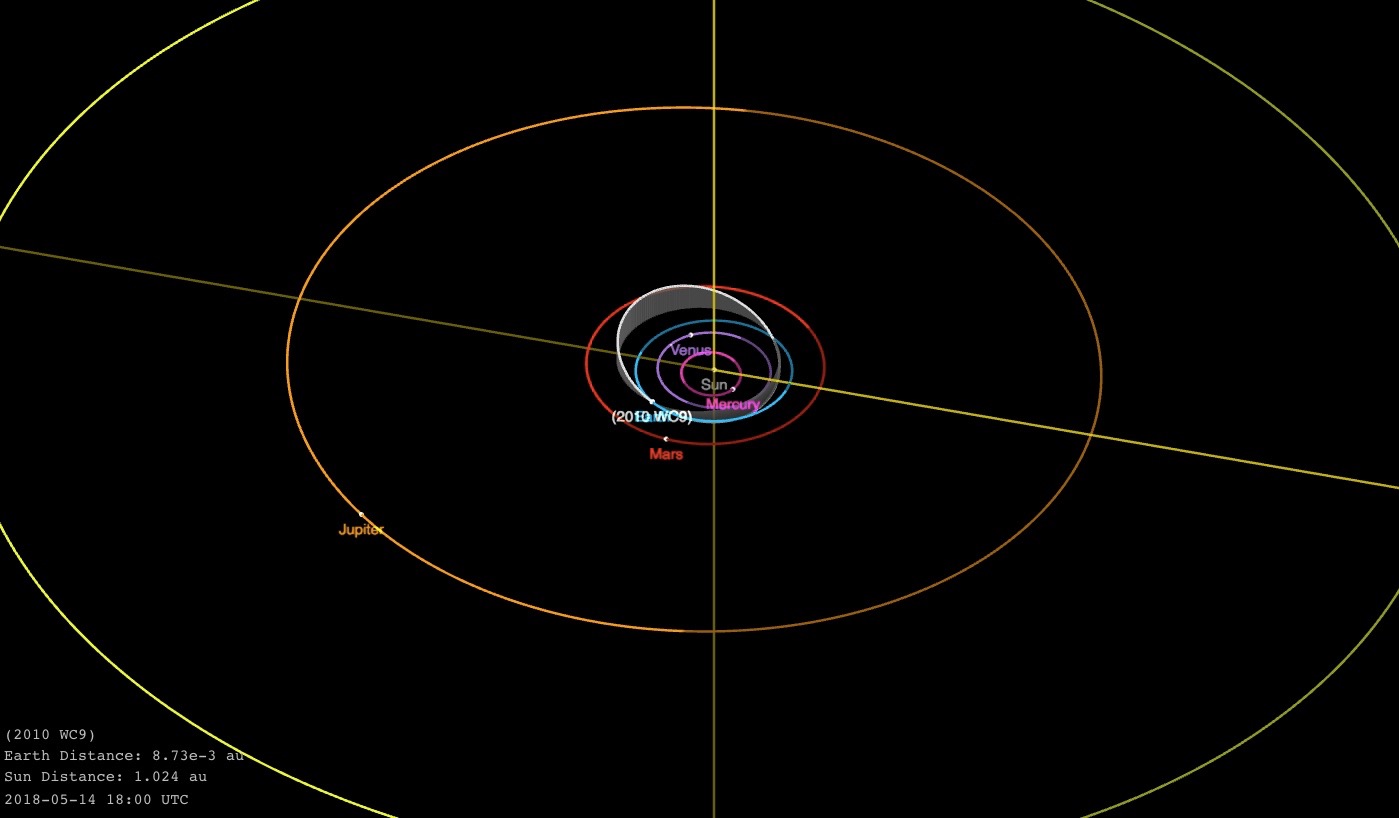Jumbo Jet-Size Asteroid 2010 WC9 Buzzes Earth Soon: See It Live Online Tonight
An asteroid the size of a jumbo jet is about to buzz Earth, and you can learn all about the historic close encounter in a webcast this evening (May 14).
The near-Earth asteroid 2010 WC9, which is thought to be between 125 feet and 390 feet (38 to 119 meters) wide, will get within 126,000 miles (203,000 kilometers) of Earth tomorrow evening (May 15) — about half the distance between our planet and the moon. It's rare for such a big space rock to get so close, astronomers have said.
To mark the occasion, the astronomy broadcasting service Slooh will host a live webcast tonight at 8 p.m. EDT (0000 GMT on May 15). You can also watch the webcast on Space.com, courtesy of Slooh. [Photos: Asteroids in Deep Space]
The webcast will feature live views of 2010 WC9 captured by four different telescopes at Slooh's observatory at the Institute of Astrophysics of the Canary Islands, Slooh representatives said. In addition, Slooh astronomers Paul Cox and Paige Godfrey will discuss and answer viewer questions about the asteroid and its trajectory.

2010 WC9 was discovered in November 2010 and observed through December of that year. However, astronomers weren't able to gather enough data to nail down the asteroid's orbit at the time, and 2010 WC9 went off the radar for more than seven years. Astronomers didn't spot the object again until just last week — and the "recovered" 2010 WC9 was initially thought to be a newfound space rock, according to EarthSky.org.
Scientists now know that 2010 WC9 completes one orbit every 1.12 years, during which it gets as close to the sun as 0.78 AU and as far away as 1.38 AU. (One AU, or astronomical unit, is the Earth-sun distance — about 93 million miles, or 150 million km.)
Even if 2010 WC9's actual size were close to the maximum estimate, the space rock wouldn't pose an existential threat to humanity; only space rocks about 0.6 miles (1 km) wide or larger are potential civilization-enders, NASA researchers have said. However, 2010 WC9 could still do quite a bit of damage on a local scale if it were on a collision course with Earth (which it's not, for the foreseeable future). For perspective: The object that exploded over the Russian city of Chelyabinsk in February 2013, shattering thousands of windows and injuring about 1,500 people, was thought to be about 65 feet (20 m) wide.
Get the Space.com Newsletter
Breaking space news, the latest updates on rocket launches, skywatching events and more!
Follow Mike Wall on Twitter @michaeldwall and Google+. Follow us @Spacedotcom, Facebook or Google+. Originally published on Space.com.
Join our Space Forums to keep talking space on the latest missions, night sky and more! And if you have a news tip, correction or comment, let us know at: community@space.com.

Michael Wall is a Senior Space Writer with Space.com and joined the team in 2010. He primarily covers exoplanets, spaceflight and military space, but has been known to dabble in the space art beat. His book about the search for alien life, "Out There," was published on Nov. 13, 2018. Before becoming a science writer, Michael worked as a herpetologist and wildlife biologist. He has a Ph.D. in evolutionary biology from the University of Sydney, Australia, a bachelor's degree from the University of Arizona, and a graduate certificate in science writing from the University of California, Santa Cruz. To find out what his latest project is, you can follow Michael on Twitter.









